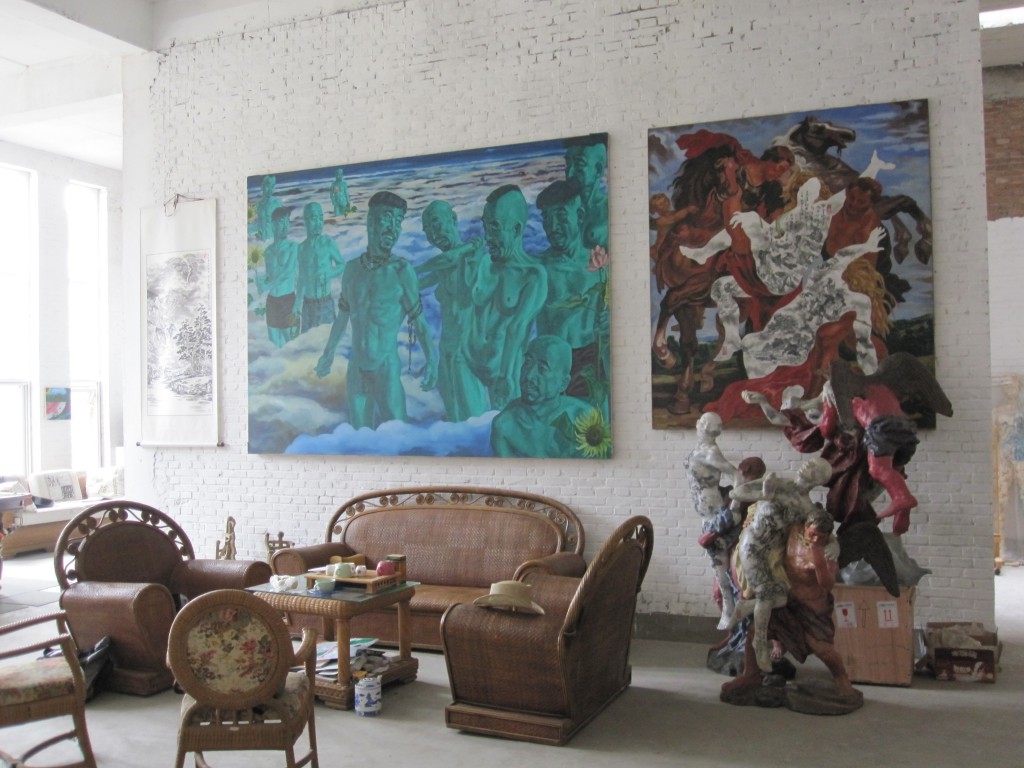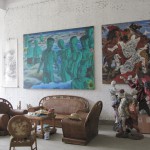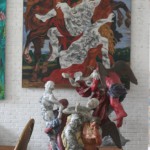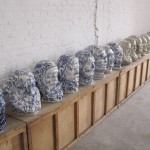1. Welsh describes the domains of museums as materiality, engagement and representation. In your opinion are these domains applicable to ChinaVine.org? If yes, please provide examples from the website for each domain. If no, please support this response through references to the article and the website.
I believe that all but one of these domains are applicable to ChinaVine.org. Having said that, I think that the one category that doesn’t quite fit with the site can still apply in certain ways. This would be materiality. Welsh states that museums are “repositories for certain categories of the material world”. He makes sure to emphasize the fact that the things they contain are part of a physical setting that puts a focus on the exchange of ideas and the conservation of history and how “people extend their beings by producing, acquiring and exchanging tangible things”. While the ChinaVine.org website does archive cultural information through pictures and text, I believe that it lacks a physicality that is key to the ideas that Welsh writes about. There is a separation that comes when experiencing something through a computer, television or any other electronic device that is a representation rather than an original manifestation or object. Good examples of this can be seen throughout society. For instance: The music industry has seen a rapid decline in sales since the introduction of the MP3 and the rise in file sharing. I think that this is an excellent example of making something available in an intangible form lessens our appreciation or connection with it. On the other hand Welsh states that “Materiality is the domain that encompasses the human capability to modify our surroundings to physically, emotionally and cognitively modify our surroundings to suit our purposes“. I think that by converting the physicality of the subjects into an intangible, electronic form is simply us exercising this human capability in order to make them conform to our needs. We may not be able to bring everyone from the University of Oregon and elsewhere with us to see what we see, but we can convert these experiences into a format that allows us to show them at least a part of their material qualities.
I think that engagement is probably the domain best used to describe ChinaVine.org. Although we are simply moving a mouse over the map of China to trigger different changes in the visuals, we are engaging in an activity that effectively draws us in to the different provinces and locations. The fact that this is a resource of the internet that is accessible to millions of people takes the idea of engagement to a whole other level. Welsh says that “Museums seek to establish relationships with a wide variety of people.” What could do this better than a website? Something such as ChinaVine.org allows for a dialogue to be created between the contributors and the participants that may not be as evident or obvious in something like an actual museum. We as a culture are now understanding the internet as a primary method of interaction and communication, and I think that a website effectively creates an expectation for a “reciprocal relationship”, especially when visitors are encouraged to post comments and interact with the people who are forming the experience.
Representation is the final domain that applies well to the ChinaVine.org site. Welsh writes that representation “-aims to re-frame our awareness of the historical and cultural landscape within museums have created themselves.” The website focuses on presenting an experience that caters to the visual expectations that many of us hold when thinking of China. Everything from the choice in text to an actual map of China being presented first and foremost pushes the idea of a cultural representation of China that provides a sense of instant legitimacy to draw in participants to the real meat of the site. Although it is extremely simple, the tiny box in the bottom left hand corner that reads “Welcome To ChinaVine, A Collaborative Effort In The Preservation of Chinese Folk Art” is a good example of framing the aims and goals of the website in much the same way that museums guide a visitor’s experience through a mission statement in addition to their exhibits. This is elaborated in the “Prologue” and “Our Mission” sections of the site.
2.Welsh describes museums as repositories, educational, celebratory, stewards, learning centers, collaborative, conceptual, and reflexive. Describe how ChinaVine falls into each of these categories. Use at least one example for each supporting your opinion. If you believe that ChinaVine.org is not addressing one of these categories describe how it could do so.
-Repositories: While I believe that ChinaVine.org can be looked at as a repository, Welsh’s definition of one seems to be heavily intertwined with the domain of materiality. Images concerning and comparing things such as the bristle dolls and dough figures in Beijing allow the user to see digital representations of the objects, but don’t allow for a true experience. The descriptions provide a purely informational idea of how and why they are made, but lack the associations with time, aesthetics, personality, community and discovery.
-Education: I believe that any website has the potential to be educational. ChinaVine.org is no exception. Anything that can create a dialogue about a certain subject can be used to inform or educate someone. I learn something every day from the internet, be it on Facebook, the news blurbs on Yahoo.com, or the price rises and drops on Amazon.com. ChinaVine.org simply takes this a step further by encouraging interaction, interest and preservation of the subject rather than using the internet as a loudspeaker or self-serving purpose. The site also brings the idea of authenticity to the table by showing our very real interactions and experiences in China as legitimate sources of information and learning. I guess you could also look at this as educational on a few levels, as presenting the information on a website encourages a certain amount of knowledge pertaining to navigation and sorting of digital information, which is becoming more and more prevalent in the world today.
-Celebratory: ChinaVine.org certainly can be classified as celebratory. Welsh describes this aspect of museums as accentuating “-positive relationships with their subjects”. I believe that the website celebrates the ideas of preservation and diversity by presenting a culturally foreign subject with a historically rich background and digitally archiving and documenting it. The connection here though is created on a personal aspect rather than a principally object based relationship. Our interaction and presentation of our experiences bring a human aspect into the mix that emphasizes individual perception and interpretation. Our mixed-media field work and blog contributions will hopefully reflect this.
-Stewards: The idea of stewardship when applied to museums focuses on content being “-the foundations for building relationships with people who recognize various kinds of continuing relationship with material controlled by museums.” ChinaVine.org doesn’t possess the physicality or materiality of museums, but it does possess the ability to bring together people from differing backgrounds, cultures and societies with shared interests and ideas. A good deal of the things concerning ownership and money certainly don’t apply to many of the information presented on ChinaVine.org, but the contributors of the site and partnership between U.S. and Chinese counterparts in support of the program can certainly apply to the idea of stewardship.
-Learning Centers: I think this is pretty much the same as education. ChinaVine.org is a very informal learning center, much like museums are. There is no direct guide or one person telling you how to interpret a certain subject or thing. This is most evident in the way that the site is configured, allowing the user to navigate his or her own way through the various provinces, villages and practices of their inhabitants. The idea of museums positioning themselves as “leisure time” alternatives also applies to ChinaVine.org. I believe that most people generally perceive their usage of the internet as leisure time, whether it be in categories of entertainment or pursuit of information. The website presents the information in an enjoyable, no-pressure environment that still promotes learning and education about China and the folkloric, cultural traditions that we will be focusing on.
-Collaboration: Although we haven’t really started into the program yet, I think that collaboration will be a key aspect of our contributions to the site. While none of us are curators or exhibit advisers, we all will be using our experiences to hopefully create a comprehensive collaborative result that provides visitors of the site to take in a wide range of subjects and personal insights into Chinese culture. ChinaVine.org not only creates a community between the participants and people we interact with, but it also does so with people who access the content and choose to leave comments or interact in some way with us. We are also serving as a collaborator with the people whose traditions and cultures we are highlighting. By documenting their words and actions with pictures, media and text we are “-providing a venue, and presumably, avoiding ascribing institutional meanings to the materials on view”.
-Conceptualization: Conceptualization in museums has a lot to do with the presence of material objects within them. While material objects don’t really apply to ChinaVine.org, I believe that conceptual attributes still pertain to the site, particularly because it focuses on Chinese traditions and culture through folkloric arts and practices to bring light to the overall state of the country and how they are affected by its rapid growth and rise to prominence in a larger overall global dialogue. This is an excellent example of what Welsh describes as conceptual configurations of materiality not dismissing the past while at the same time not ignoring the present. The website’s relaxed form and lack of guided direction allow for a good amount of individual interpretation in which users can draw their own conclusions.
-Reflexivity: Welsh describes reflexivity as “-emphasizing the relationship between the museum and its subject, and opens a pathway for visitors to interpose their own perspectives.” With our contributions to the site, we are providing viewers with a message about cultural aspects of China that acknowledges its own nature through multiple viewpoints. Having a comment box and providing opportunities for communication between visitors of the site and its contributors allows for a variety of alternative views of the subjects we will be exploring and posting to the blog stream and site. This communication between us, the “stewards” and them, the “visitors” is a great example of what Welsh calls a “-relation of shared authority, as both visitors and museums engage in constructive activities that give rise to the possible meanings of things,” which is an essential part not only to the potential for reflexivity, but also for education.



























